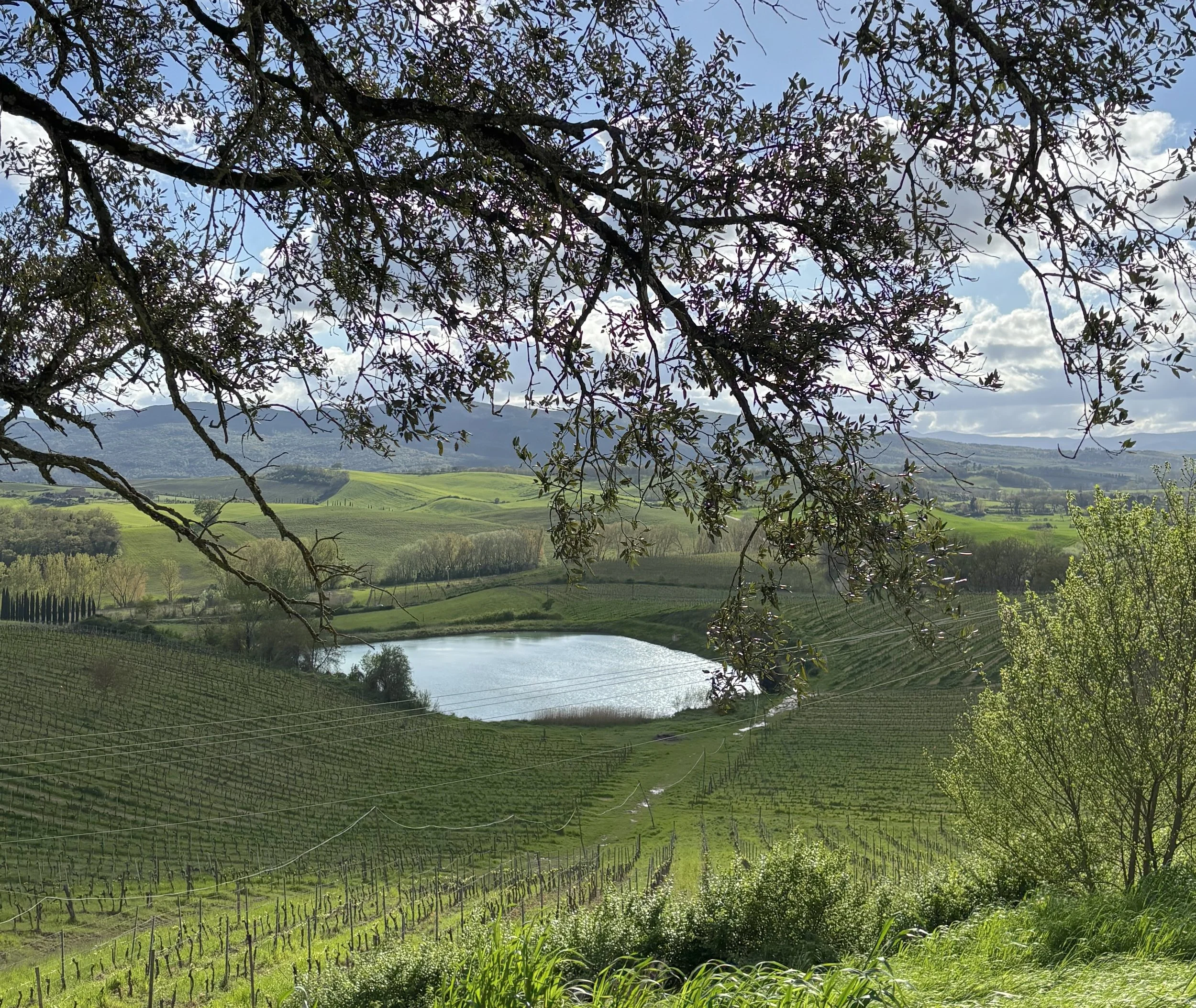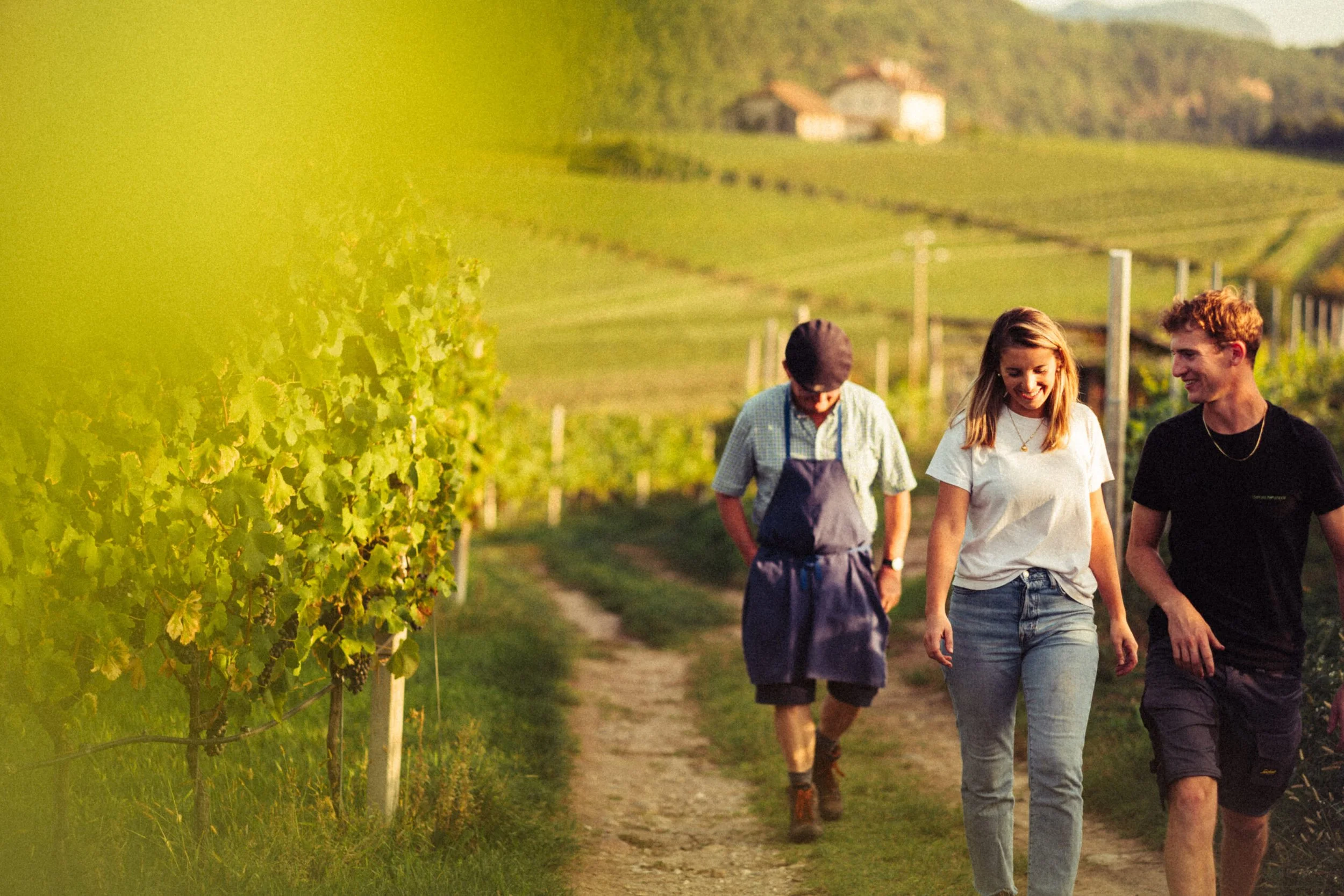Tucked into the picturesque hills of Alto Adige (also known as Südtirol), at the base of the towering Dolomites, is the Niedrist family winery—a generational enterprise that has been producing wine for almost 200 years. Grown in the cool mountain climate, the Niedrist whites are crystalline and haunting, and the reds are delicate and graceful, reflective of the incredible care that goes into producing them.
In 1989, Ignaz and Elisabeth Niedrist took over the family business and made several significant changes, adding new vineyards to the core operation and expanding the repertoire of varieties significantly. Through sustainable cultivation resulting in impeccable quality, Niedrist has thrived for the last four decades, with the next generation taking over its share of the work.
Maria Niedrist and her brother Johannes are now hands-on with harvesting and production in the cellar, melding their own philosophies and insight with the practices of their parents. Fall always feels like the right time to talk about wines from the Alto Adige - they are the perfect pairings for cooling weather, heartier dishes and holiday meals. Textural and aromatic whites and lightly tannic reds are exactly what we want in our glass this time of year. We recently sat down with Maria, who had just finished with the 2025 harvest, and she caught us up on all the latest developments at Niedrist.
OM: What does a typical day in Alto Adige look like for you?
Maria: It really depends on the season. I think it’s the most important factor influencing our life. We are very close to the Dolomites and we’re living in a small town with no real big cities around us. So the things we do are strictly related to the weather. Our family life is cycling around these seasons. There are the vegetational summer months, then harvest, then it gets a little calmer and we can travel a little bit. So it just depends on which day you choose and when.
OM: How about your brother?
Maria: For Johannes, he goes directly to the winery in the morning, and into the cellars. I tend to go directly into the office right now. We’re always switching. When pruning season starts, we’re out in the vineyards quite often. During the summer months, we’re out the vineyards all day long. There isn’t much time for sitting in front of a screen. Email has to be done in the evening.
OM: Have you fully taken over the winemaking now, or is your dad still hands-on?
Maria: The winemaking itself starts by deciding when we harvest because that’s the most crucial part. That’s what I do. I do the sampling, analyzing, and deciding the day we start harvesting. The first winemaking steps in the cellar are done by Johannes, my father, and me, working together. The next production steps like racking are done by my brother, and I help fill the barrels while my dad cycles around and checks in on us.
OM: How long have you both been involved in the winemaking?
Maria: This is the third harvest for Johannes and the fifth for me.
OM: What was the 2025 vintage like for you?
Maria: It was incredibly busy. We typically only harvest in the morning and then we bring the grapes into the cellars, but this year we were harvesting the entire day. We started at 7 AM and stopped at 6 PM, which was crazy for us and our harvest team. We work with a lot of older people from our village, who have great expertise, but they get tired! They’re not typically working the whole day.
OM: How long was harvest?
Maria: Typically it takes us five weeks, but this year we had to do it in three, which was crazy. We had ten days of higher temperatures in August, then the last ripening days before harvest were warm followed by warm nights. That made the ripening process much faster. We have two locations where we grow most of our grapes and usually they ripen about ten days apart, but this year it all happened in less than a week. Everything was ripe at the same moment.
OM: So you had to move fast!
Maria: Yes, with warm nights the grapes start to lose their stability. Then you have problems with their health, so you really have to be fast. But we were fast, so we are very happy with the results. The musts—the first wines—are beautiful. The flavors are vibrant and beautiful with lower alcohol levels because we had to harvest some of the plots a little earlier. In general, I think the wines are better like this.
OM: How does it affect the whites versus the reds?
Maria: We had to harvest the Pinot Bianco (Weissburgunder) first because it was going to lose stability, then the Pinot Nero is always a little tricky. It’s also our dad’s favorite grape, so we have a strict focus on that. Then the Chardonnay, which is very close to my heart because I worked in Burgundy. The PH is always so important to the stability of Chardonnay, so I was closely monitoring that.
OM: Does everyone in the family have their own personal favorite grape?
Maria: We all definitely have our own agenda!
OM: Looking at your social media posts over the growing season has been so inspiring, mainly because of how idyllic the environment looks with the mountains surrounding you. It’s very romantic.
Maria: I try to honestly show what’s happening around us, but I’m the only one doing this stuff, and I’m highly critical (laughs). During harvest it’s tough because you have sticky fingers, so I have to stop and pull off my gloves to capture it. Content creation has become more important, but I don’t create the content, the content is there before my eyes.
Check out the Weingut Niedrist Instagram profile here
























